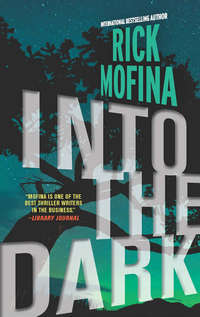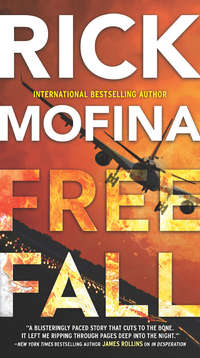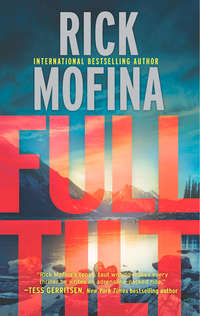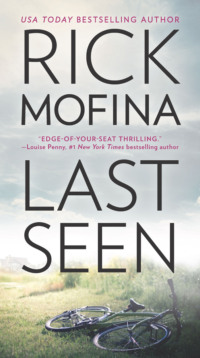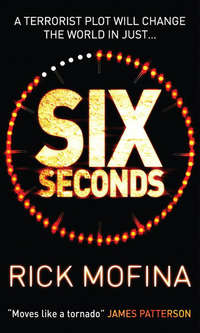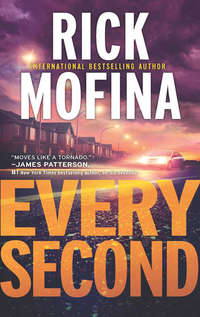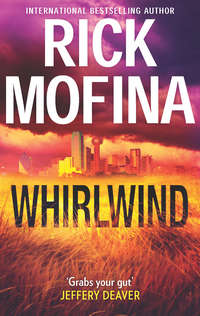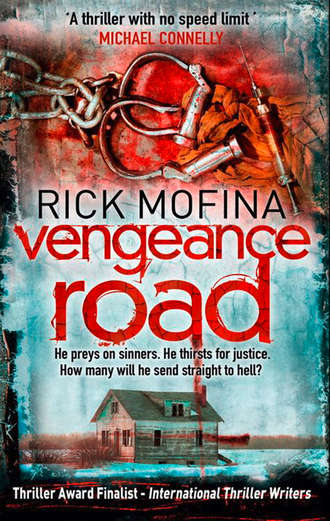
Полная версия
Vengeance Road
Gannon thought having Brandy accompany him would help. Barely out of her teens, she was nonthreatening, especially with that sunny gum-chewing smile.
As they reached the door, it opened to two women hugging goodbye.
“Excuse us,” he said. “I’m Jack Gannon, and this is Brandy McCoy. We’re with the Buffalo Sentinel. We’re looking for Helen Dodd and Kim Landon?”
Surprised, the two women looked at each other.
“Would that be you?”
Kim nodded. Helen was uneasy. Both women looked as though they had been crying. Gannon didn’t want to lose them.
“Can we talk to you a bit about this morning?” he asked.
“How did you get this address?” Helen Dodd wanted to know.
Gannon said, “Well, we just came from the park, talked to police sources and stuff. We understand you found the woman.”
Awkward silence followed until Brandy punctuated it with a prompt.
“It must’ve been terrible.”
Kim resumed nodding.
“It was horrible,” Kim said.
“May I take notes?” Gannon asked.
“I don’t know.” Helen eyed their press tags. “You’re going to put this in the Sentinel?”
“Yes, for the story we’re doing,” Gannon said.
“For as long as I live, I’ll never forget it,” Kim started. “At first we thought it was a joke. When you see something like this, it makes you appreciate what’s important. It was just so horrible. I mean, neighbourhood kids play in that park.”
“I hope they catch the monster who did it,” Helen said. “I’m calling my home-security company to make sure they keep an eye on my house.”
“Can you walk us through how you found her?” Gannon asked.
“We take a regular morning walk in that area and spotted it. Her,” Kim said. “At first she looked like a mannequin, entangled in shrubs and small trees. We didn’t get too close once we realized what it was.”
“Can you tell me exactly what you saw?” Gannon asked.
“We’d heard stories about what happens in there at night, which I never believed until now. We saw condoms and hypodermic needles,” Kim said.
“She was in a shallow grave,” Helen said. “We saw dark hair, an arm bent over a head in a swimmer’s posture, like she was breaking the surface of the earth.”
After they finished, Gannon dropped Brandy off at the scene to keep vigil until they removed the body.
He had to get back to the newsroom.
This was shaping up to be a grisly homicide, he thought, settling in at his desk. While eating a club sandwich from the cafeteria, he checked regional and state missing-person cases posted online, using the detective’s description of a white or Native American woman in her twenties as his guide.
So many of them fit the general description, he thought, wondering if there was any chance this was linked to that tip he wanted to chase about a missing woman from Vermont or Connecticut. He stared into their faces, reading their information.
Was he staring at the unidentified victim near Ellicott Creek? Who was she? And how did her life come to an end there? She was someone’s daughter, maybe someone’s wife or sister?
He was pierced by a memory of his sister, Cora.
And what became of her life?
He couldn’t dwell on that now and forced himself back to his story.
“Do we have any idea who she is?” Tim Derrick, the assignment editor, had a habit of sneaking up behind reporters and reading over their shoulders.
“Not yet.”
Gannon clicked onto the latest news release from the investigators. He touched his pen to the words “unidentified female, in her twenties.”
“She was sort of half buried in a shallow grave,” Gannon said.
“Cripes,” Derrick said. “Well, we’ve got strong art from the air and the walkers. Front will take your story. Give us about twenty-five inches or so. Make sure the Web people get it.”
“Sure.”
Derrick patted Gannon’s shoulder.
“And nice work.”
“Hey, Tim. Anything more to the rumors going around about more cuts?”
Derrick stuck out his bottom lip, shook his head.
“The way things are in this business, those rumors never go away.”
A few hours later, as Gannon was giving his story a final read through, polishing here and there, his line rang.
“Hi, Jack, it’s Brandy.”
“How you doing there?”
“The medical examiner just moved the body. I got some good shots and sent them in to the photo desk.”
“Thanks, I’ll have a look.”
After he’d finished his story Gannon joined the night editor at the photo desk where he was reviewing the news pictures with Paul Benning, the night photo editor.
“It’s all strong.” Benning clicked through the best frames as he worked on finishing a milk shake.
Here was the sharp overview showing a brilliant yellow tarp isolated like a flag of alarm amid an all-consuming forest, Gannon thought.
Here was the medical examiner’s team, grim-faced with a black body bag strapped to a stretcher, loading it into a van.
Here were Helen Dodd and Kim Landon, tight head shots, shock etched in their faces. Here was Kim, looking off, eyes filled with worry.
“Go back to the aerial,” Gannon said.
Benning sucked the remnants of his shake through a plastic straw.
“You see something?
“Maybe. Can you blow it up?”
Benning enlarged it.
Click after click drew them closer to the tarp and a fleck of white near the left edge. Click after click and the fleck grew, coming into focus as a hand.
The woman’s hand, reaching from the tarp.
Reaching from her grave, as if seizing him in a death plea to tell the world who did this.
Before they did it again.
4
Some thirty-six hours after it had been removed from its shallow grave, the body was autopsied at the Erie County Medical Center, on Grider Street off the Martin Luther King Expressway.
Death was classified a homicide.
Using fingerprints and dental records, the dead woman’s identity was confirmed as being Bernice Tina Hogan, aged twenty-three, of Buffalo, New York. The facts of her death were summarized in a few sentences in a police news release.
Nothing about the pain of her life, Gannon thought as he worked on a long feature about her. After her name had been released, some of her former classmates had contacted him at the paper.
“Bernice had a hard life,” one friend told him.
Bernice never knew her real parents. She’d been told she had some Native American blood, maybe Seneca, and had been raised, for a time, on a reservation. Maybe Allegany, or Cattaraugus. She wasn’t sure. Bernice had never been sure about much in her short life, her friends told him.
Some sent him photos.
She stood stiff and shy in obvious embarrassment; a heavyset girl with low self-esteem who’d been abused by her foster father, who also beat her foster mother.
At first she’d overcome it all. Bernice did well in school, going on to study nursing at Buffalo State, nearly graduating before she was drugged and raped at a party.
“After that happened she was so brokenhearted. It was like she just gave up. She began missing classes,” one friend said.
Bernice had grown addicted to crack. Few people knew that she’d slipped into prostitution as she descended down a path that ended in a makeshift grave under a thicket of twisted maple near Ellicott Creek.
Gannon wanted to talk to Bernice’s family, but no one knew who her foster mom was, or where she lived. So he made a lot of calls over the next few days until he got a lead.
“You didn’t get this from me, but her name is Catherine Field,” a source at the city’s Social Services and Housing Department told him.
Catherine Field was a widowed fifty-nine-year-old diabetic who lived alone on welfare in an older section of the city west of Main. Gannon had gone to the address several times but in vain.
No one was home.
But he refused to give up trying to find her.
Maybe today would be different, he thought as once again he rolled by the home where Catherine had raised Bernice. It was a small two-story frame house built with the optimism that had blossomed when the Second World War ended. Now, with its blistering paint, missing shingles and sagging front porch, it looked more like a tomb for hope.
It sat among the boarded-up houses near a vacant lot where several old men leaned against an eviscerated Pinto and passed around a bottle wrapped in a paper bag.
Memories of his sister rushed at him before he turned his attention back to the story and the house, eyeing it intensely as he drove by. His hopes lifted when he saw a woman in the backyard.
This time he parked out of sight down the block and approached the house from a different street, coming to the back first, where he saw a woman in her fifties, tending a flower garden near the rickety back porch.
“Catherine Field?”
She turned to him, the toll of a hard life evident in the lines that had woven despair on her face. Her red-rimmed eyes stared helplessly at him.
“You are Catherine Field, Bernice Hogan’s foster mom?”
“Who are you?”
“Sorry,” Gannon fished for his photo ID. “Jack Gannon, a reporter for the Buffalo Sentinel.”
As if cued, breezes curled pages of the News and the Sentinel that were on a small table between two chairs. Also on the table: a glass and a bottle of whiskey that was half-empty.
“I’ve been trying to reach you,” he said.
“I was burying my daughter.”
“I’m sorry. My condolences. There was no notice of the arrangements.”
“We wanted to keep it private. My brother had a plot, a small cemetery on a hill overlooking an apple orchard.”
“Where is it?”
“I don’t want to say.”
“I understand. May I talk to you about Bernice?”
“You can try, I’m not in good shape.”
She invited him to sit on the porch. Gannon declined a drink. Catherine poured one for herself, looked at her small garden and spoke softly. She told him that Bernice’s mother was a child, fourteen years old, when she gave her up for adoption.
But Bernice was never adopted. Instead, she was bounced through the system. Catherine and her husband, Raife, a carpenter, became Bernice’s foster parents when Bernice was eleven. By then Bernice was aware that she’d been given up for adoption.
“I loved her and always felt like her mom, but she chose to call me Catherine, never Mom. I think it was her way of emotionally protecting herself because she’d had so many ‘moms.’ No one could ever really be her mother.”
Not long after they got Bernice, Raife started gambling, and drinking. He became violent and abused Bernice and Catherine before she left him.
“I’ll spend my life regretting that I didn’t do more to protect her.”
Catherine considered her glass then sipped from it.
“She was such a bright girl. Always reading. I was so pleased when she left home to get her own apartment and start college. So proud. She was on her way. She volunteered at a hospice in Niagara Falls. I just knew she was going to make it. Then the bad thing happened.”
“Her friends told me about the party.”
“They think someone slipped something in her drink. She never overcame it. She turned to drugs to deal with it. She wouldn’t talk to me or anyone, but I heard that when she ran up drug debts, she turned to the street.”
Tears rolled down Catherine’s face.
“When was the last time you saw, or talked, to her?”
Catherine wiped her tears and sipped from her glass.
“She called me about a month ago and said she was going to try to get clean, try to get off the street. Some friends were trying to help her.”
“Did she say who those friends were?”
Catherine shook her head.
“You can’t print anything I’ve just told you.”
“But I’m researching your daughter’s death for a news story. I have to.”
“No. You can’t print anything.”
“Catherine, I identified myself as a reporter. I’ve been taking notes. This tragedy is already public. Now, did Bernice say anything about anyone possibly harming her?”
“I’m not supposed to say anything. They told me not to talk to the press.”
“Who?”
Catherine stood.
“Please, you can’t print anything. You have to go.”
“Wait, who told you not to say anything?”
Several moments passed.
“At least tell me who told you not to speak to the press about your daughter’s murder.”
She looked at him long and hard.
“The police.”
5
Two days after her corpse had been identified, Bernice Hogan’s shy smile haunted Gannon from the Sentinel’s front page.
Her picture ran under the headline:
Murder of a brokenhearted woman
Nursing student’s tragic path
Here was a troubled young woman whose life held promise. A woman who, despite the cruelty she’d endured, had been striving to devote herself to comforting others. His compassionate profile was longer than his earlier news stories and contained information unknown to most people, including his competition.
Not bad, he thought, sitting at his desk, rereading his feature in that morning’s print and online editions.
Tim Derrick swung by, drinking coffee from a mug bearing the paper’s logo.
“Nate likes what you did,” Derrick indicated the corner office of Nate Fowler, the paper’s managing editor, the man who controlled the lives of seventy-five people in editorial. Invoking his name gave currency to any instructions as quickly as it made people uneasy.
Fowler was not a journalist. He was a Machiavellian bureaucrat and Gannon did not mesh with him as well as he did with the other editors.
“Did he say anything else?” Gannon asked.
“He wants you to stay exclusively on the murder story, do whatever you can to make sure we own it. He said we need hits like this to boost circulation and stay alive.” Derrick pointed his finger gunlike at Gannon’s old Pulitzer-nominated clips and winked. “And if anyone’s going to take it to the end zone, it’s you.”
Gannon was not so optimistic.
He needed a strong follow-up today but faced a problem.
The New York State Police led the Hogan investigation and he didn’t know the lead detectives. He looked at their names on the last news release, Investigators Michael Brent and Roxanne Esko.
He’d put in calls to them but none were returned. He could go around them, but it meant asking sources to go out on a limb by leaking information to him.
He had sources everywhere: the Buffalo homicide squad, Erie County, Amherst, Cheektowaga, the FBI, Customs and Border Protection, the DEA, the U.S. Marshals Service, pretty much every agency in the region.
But nobody was saying much.
Maybe it went back to what Catherine Field had said about the police telling her not to speak to the press. At first he hadn’t been concerned because detectives often asked relatives of victims not to speak to reporters, especially during the early days of an investigation.
But now, as he sat at his computer searching for a new angle, he wondered if it was a factor here. He couldn’t shake the feeling he was missing something.
“That Hogan case is sealed, man,” one source had told him. “But I heard that some of the people close to it were rattled by what the guy had done to her. I heard that it pushes the limits of comprehension.”
Another source said that a number of law enforcement agencies were called in to help, possibly because of the area where she was found, and possibly because of other complications.
“I’ll tell you something nobody in the press knows,” the source said. “There’s a closed-door case-status meeting with a lot of cops from a lot of jurisdictions. It’s been going on all morning out at Clarence Barracks.”
Gannon grabbed his jacket.
He’d go out there and see if anyone would talk to him.
The New York State Police patrol east and northeast Erie County from the drowsy suburb of Clarence, east of Buffalo. Clarence Barracks was on Main Street, housed in a plain one-story building.
When Gannon arrived, the woman at the reception desk was twirling her pen and talking on the phone.
“I’ve been temping all week, just when they get this big case … meeting after meeting, people coming, people going—one second, Charlene.” She clamped her hand over the phone. “May I help you?”
“I’d like to see Michael Brent or Roxanne Esko. I’m with the Buffalo—“
“They’re all in the meeting, third door on the right.” She pointed down the hall with her pen. “I’m supposed to send everybody there.” She went back to her conversation. “What’s that? She’s pregnant! OH MY GOD! How many is that now?”
“But I’m with the Buffalo Sentinel.”
Ignoring what he’d said, the receptionist pointed him down the hall.
“Go,” she told Gannon. “It’s all right. Everybody’s in the meeting.”
He hesitated for as long as it took the receptionist to buzz him through the security door. As he went down the hall he could almost hear the floor cracking under him for he was treading on thin ethical ice. Through innocent circumstance he’d gained entrance to the inner sanctum of the investigation of Bernice Hogan’s murder. The door to the meeting was half-open. He could hear loud voices.
How should he play this?
He’d knock on the door, identify himself then request to speak to Brent or Esko. They’d likely shoo him away, have him wait at reception.
At that instant the door opened and a man he didn’t recognize exited, talking on his cell phone. Gannon turned and bent over a water fountain as the man, his tie loosened, shirtsleeves rolled up, whisked by him to the opposite end of the hall talking loudly on his cell.
“Tell Walt this Hogan thing is going to be a ballbuster,” he said into the phone. “No one will believe where they’re going with it. Yeah, they’re keeping a tight lid on this. Yeah, I got to get back.”
The man returned to the room and Gannon inched closer to the door.
It remained partially opened. Voices of people arguing spilled from it.
“I don’t buy it.”
“Look at what we know so far.”
“What you have so far is hearsay, Mike!”
Gannon’s breathing quickened. As he inched closer he got a limited view of a large whiteboard. He glimpsed a patch of handwritten times, dates, streets, arrows, then a clear view of initials written in blue marker under the heading “Suspect.” The initials on the board were blocked by an open hand slapping it to stress the point someone was making.
“Given all that we’ve got so far, all that we’re following up with, this guy is our suspect and the focus of our investigation.”
The hand vanished.
Gannon’s heart beat faster as he glanced around to be sure no one could see him. He stepped closer and saw the initials of the suspect.
K.S.
Who was that?
“It’s bullshit, Mike, I’m telling you!”
For an instant Gannon caught sight of someone he knew.
“How can you be so sure? We just don’t buy it.”
“It’s not a done deal. Listen, we’ve got a lot of hard work ahead of us, but based on what we’ve got, everything points to him. He’s the key.”
“Let’s see if I have this right. Based on the things a couple of crack hoes on Niagara told you, you’re telling us that a cop, a decorated detective, is your suspect for Hogan?”
A cop?
Gannon froze.
Then he felt a hand on his shoulder.
6
Gannon turned around to see the receptionist’s puzzled face.
“Aren’t you going to go in?” she asked, holding a stack of files she appeared to be delivering.
“No, I was just leaving.” He kept his voice down as he walked to the door. “I have to go.”
“Well, I forgot to have you sign in,” she said. “But if you’re done I guess it doesn’t matter.”
Gannon waved his thanks, headed to his car, hurrying when he got to the lot. He pulled away, a thousand concerns shotgunning through his mind as he struggled to concentrate on what he’d heard.
A detective was the prime suspect in Bernice Hogan’s murder.
This was big. Huge.
He wouldn’t alert the desk yet, not until he nailed it. He had to keep this to himself until he had it in the bag.
Never oversell a story.
First things first.
He had to confirm the name behind K.S. and the police department the suspect worked for. He had an idea and drove downtown to the headquarters of the Buffalo and Erie County Public Library system. The building took up two city blocks in Lafayette Square.
He went to the public computer terminals and logged into the databases for the city of Buffalo employee listings by department. The Buffalo Police Department was the area’s largest police force.
Let’s start here, he thought as he began searching the BPD’s directory for all officers whose surname started with an S.
Damn.
They were not ordered alphabetically but rather by seniority. With more than eight hundred officers to check, this would take time. Page after page of names blurred before he found a K.S.
Ken Smith. Then another. Kim Sailor. Then another. Kent Sanders. And another. Kevin Sydowski.
By the time he was done, he’d mined nine possibilities from the Buffalo Police Department. He moved on to the database for officers with the Erie County Sheriff’s Office. After searching some four hundred names there, he had three more candidates: Kal Seroudie, Kyle Sawchuk, and Keen Sanchez.
But there were numerous police departments that served greater Buffalo, like the Cheektowaga Police Department, the Amherst Police Department, Hamburg, North Tonawanda, West Seneca, and Ascension Park, to name a few.
He continued scouring the databases.
As time passed he realized that he would never get through them all. He stopped to think. So far, he had some sixteen possibilities, but this was turning out to be a needle-in-a-haystack search.
He needed help confirming the name.
He’d use another option.
He abandoned the computer, went to a public telephone and called the private number of the person he’d seen at the meeting. He hadn’t talked to his source for some time and was reluctant to push, but the stakes were high.
No one answered.
He left a message then returned to the newsroom, which was in full midday mode with reporters talking on phones, or typing at keyboards, or huddled with editors discussing stories. Gannon had grabbed a BLT in the cafeteria and was threading his way to his desk.
“Hey, Jack, what’ve you got?” Tim Derrick held up his clipboard listing the stories for tomorrow’s paper. “I’m heading into the meeting. I’ve got you skedded for a follow-up on the investigation into Hogan.”
“I’m expecting more information. I’ll let you know if it falls through.”
“Remember, Nate’s counting on you for a scoop.”
As Gannon settled in at his desk and prepared to eat his late lunch, his phone rang. He answered after getting two quick bites down.
“Jack Gannon, Buffalo Sentinel.”
“I got your message.”
The caller’s number was blocked but he knew the voice.
“Thanks. It’s been a while,” he said. “How are you?”
“Oh, you know me. Same old same old. And you?”
“I’m a bit under the gun. I need a favour,” he said.
“Something to do with Hogan?”
“I understand they’re looking at a cop for it?”
Silence hissed in his ear.





